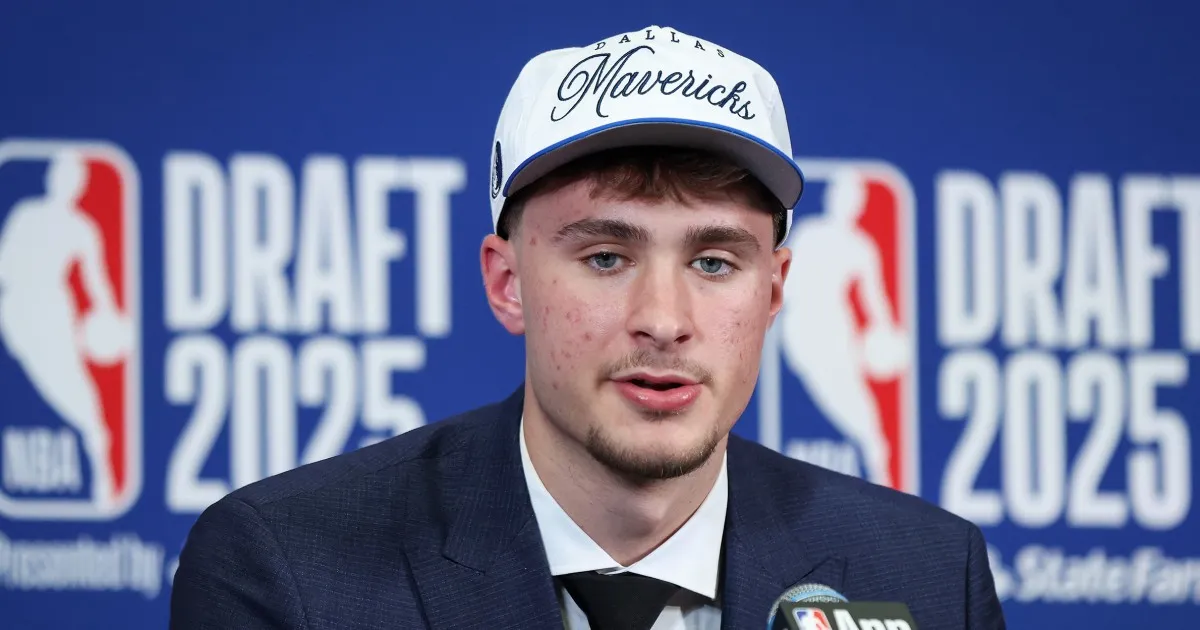
In the world of NBA Draft analysis, there's a common adage that a draft class cannot be accurately assessed until at least two years have passed. However, the excitement surrounding the 2025 NBA Draft is too compelling to ignore. As soon as the first round concluded in Brooklyn, New York, NBC News took a deep dive into the significant narratives that emerged from the first 30 picks, shedding light on the potential impact of players like Cooper Flagg and Ace Bailey.
The Dallas Mavericks made headlines by selecting Cooper Flagg as the No. 1 overall pick. Flagg's remarkable versatility makes him a valuable addition to any team in the NBA. The real question, however, is how Mavericks coach Jason Kidd will utilize Flagg in the absence of Kyrie Irving, who is expected to miss the upcoming season due to a knee ligament injury. With the Mavericks positioned to acquire a point guard like Chris Paul this offseason, there’s a strong case for allowing Flagg to take on a primary playmaking role early in his career, mirroring the approach taken with Luka Doncic in 2018. Having witnessed Flagg compete against established NBA stars at just 17 years old, I am confident in his ability to navigate the complexities of NBA defenses from the get-go.
Analyst Nadkarni echoes this sentiment, suggesting that Flagg will thrive in a less pressurized environment compared to typical top draft picks. His defensive prowess could also complement a roster featuring Anthony Davis and the emerging rim protector Dereck Lively III, positioning him as a key defensive asset for the Mavericks.
Among the most intriguing selections was the Utah Jazz’s pick of Ace Bailey. Nadkarni believes this choice was a strategic gamble worth taking, especially since Utah struggles to attract high-profile free agents. After the Jazz fell out of the top four, landing a talent like Bailey, who many expected to go in the top three, feels like a significant win. While Bailey may initially express dissatisfaction, he comes with a cost-controlled contract for four years, allowing the Jazz to build a competitive roster around him. This situation is reminiscent of when Donovan Mitchell rose to prominence within the same franchise, providing Bailey a similar opportunity to leave his mark.
The Philadelphia 76ers opted for VJ Edgecombe with the third overall pick, a decision that raised eyebrows given the team's tumultuous season, which included injuries to star player Joel Embiid and a disappointing debut for free-agent acquisition Paul George. Greif argues that retaining this pick to select Edgecombe was a wise choice, as he can contribute immediately and serve as a foundational piece for the team's future. His athleticism is particularly valuable for a squad laden with older, injury-prone stars, and pairing him with young guard Tyrese Maxey will be a storyline to watch closely on League Pass.
This year's draft also featured unexpected selections, such as BYU’s Egor Demin, who went eighth overall to the Brooklyn Nets—well above his projected spot. However, the most shocking leap was made by Yang Hansen of China, who was selected 16th overall by the Portland Trail Blazers after being pegged for a second-round pick. Hansen’s 7-foot-1 frame, combined with his unique passing ability, has drawn comparisons to Nikola Jokic, although it's essential to temper expectations given Jokic's unparalleled passing skills. Hansen’s previous performance in China, where he averaged 15 points, 11 rebounds, and four assists as a teenager, makes him a player to watch in the NBA.
On the other hand, the New Orleans Pelicans left many analysts scratching their heads after a series of puzzling moves. After trading C.J. McCollum for Jordan Poole, they made headlines again by trading up from No. 23 to No. 13 to select Maryland's Derik Queen, sacrificing an unprotected first-round pick in the process. This decision raises significant questions about the Pelicans' rebuilding strategy, especially considering they may have traded a potential top-five pick for a late lottery selection.
Greif shares this confusion, noting that the Pelicans’ decisions seem counterintuitive given their rebuilding phase. In contrast, both Washington and Utah emerged as winners in the draft. The Wizards’ selection of Tre Johnson at No. 6, coupled with their trade for CJ McCollum, provides a veteran presence to mentor a promising young scorer, setting a new direction for the franchise. Meanwhile, Utah’s selection of Bailey and Walter Clayton Jr. signals a renewed commitment to building a competitive team after years in the NBA wilderness.
The 2025 NBA Draft has undoubtedly set the stage for exciting developments in the league. From the Dallas Mavericks’ acquisition of Cooper Flagg to the Utah Jazz’s strategic pick of Ace Bailey, each team has made choices that could significantly impact their future. As the season progresses, it will be fascinating to watch how these young players adapt and contribute to their respective teams, ultimately shaping the landscape of the NBA for years to come.